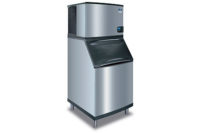The drumbeat for natural refrigerants is on the increase including the need for faster application. ATMOsphere 2010 was a recent international workshop held in Brussels, Belgium, with a single theme, “How to bring natural refrigerants faster to market.”
According to a report from the organization, a variety of stakeholders in the natural refrigerant sector were represented and the refrigerants in focus were CO2, hydrocarbons and ammonia. Industry representatives explained what is feasible today, what technologies using natural refrigerants are available on the market, and what barriers they face.
“Just that I am here today and that my colleagues were here yesterday shows that things are moving,” said a representative of the European Commission, the executive body of the European Union which sets policy for 27 member nations.
“But you have to keep the momentum. If the EU moves, if the biggest commercial block in the world moves, other countries will likely follow the example of addressing the issue of refrigerants. But even if other countries do not introduce similar measures, industry will adapt because no one wants to have two different production lines for the same kind of product.”
And he continued, “Natural refrigerants are on the agenda of the European Commission. They cannot be ignored anymore.”
Natural refrigerants also got support from the United Nations Environmental Program and the United Nations Industrial Development Organization as replacements for HCFCs. This was confirmed by Rashendra Shende, head of OzonAction at the UNEP, and Sidi Menad Si Ahmed, director of the Montreal Protocol Branch at UNIDO.
“There has been funding for the phaseout of CFCs. Now there is funding for the phase-out of HCFCs. But we can be pretty sure that there won’t be money left for a third round of funding to finance the phase-out of HFCs that unfortunately have replaced the HCFCs in developed countries. So it is crucial to help developing countries to opt for a sustainable solution right away, namely natural refrigerants,” said one of the conference participants from the Ss. Cyril and Methodious University in Macedonia.
But developing countries lack information on alternative solutions while they are strongly lobbied by the chemical industry, it was stated. For this reason, the organizers together with UNEP provided funding for 10 developing country representatives to enable them to participate, learn about natural refrigerant technologies, and bring this knowledge back home.
“Our children will ask us ‘Why didn’t you do anything against HFCs, while you knew how damaging they were?’” said MEP’s Hassi in her dinner speech.
Another aspect was for ATMOsphere 2010 to offer a stage for the industry to display the available technology using natural refrigerants. “We just need to carry on the momentum,” said Marc Chasserot, chairman of ATMOsphere 2010.
This vision was backed by Phillippe Delpeche, president of Carrier Commercial Refrigeration. “CO2 technology is not emerging, it is well established. By 2020 it will become the standard.”
He said, “At the end of the day, the battle is won. What you can do is speed up the process of bringing natural refrigerants to the market.”
For more information, visit www.atmosphere2010.com.
Publication date:12/06/2010
Copyright ©2025. All Rights Reserved BNP Media.
Design, CMS, Hosting & Web Development :: ePublishing







